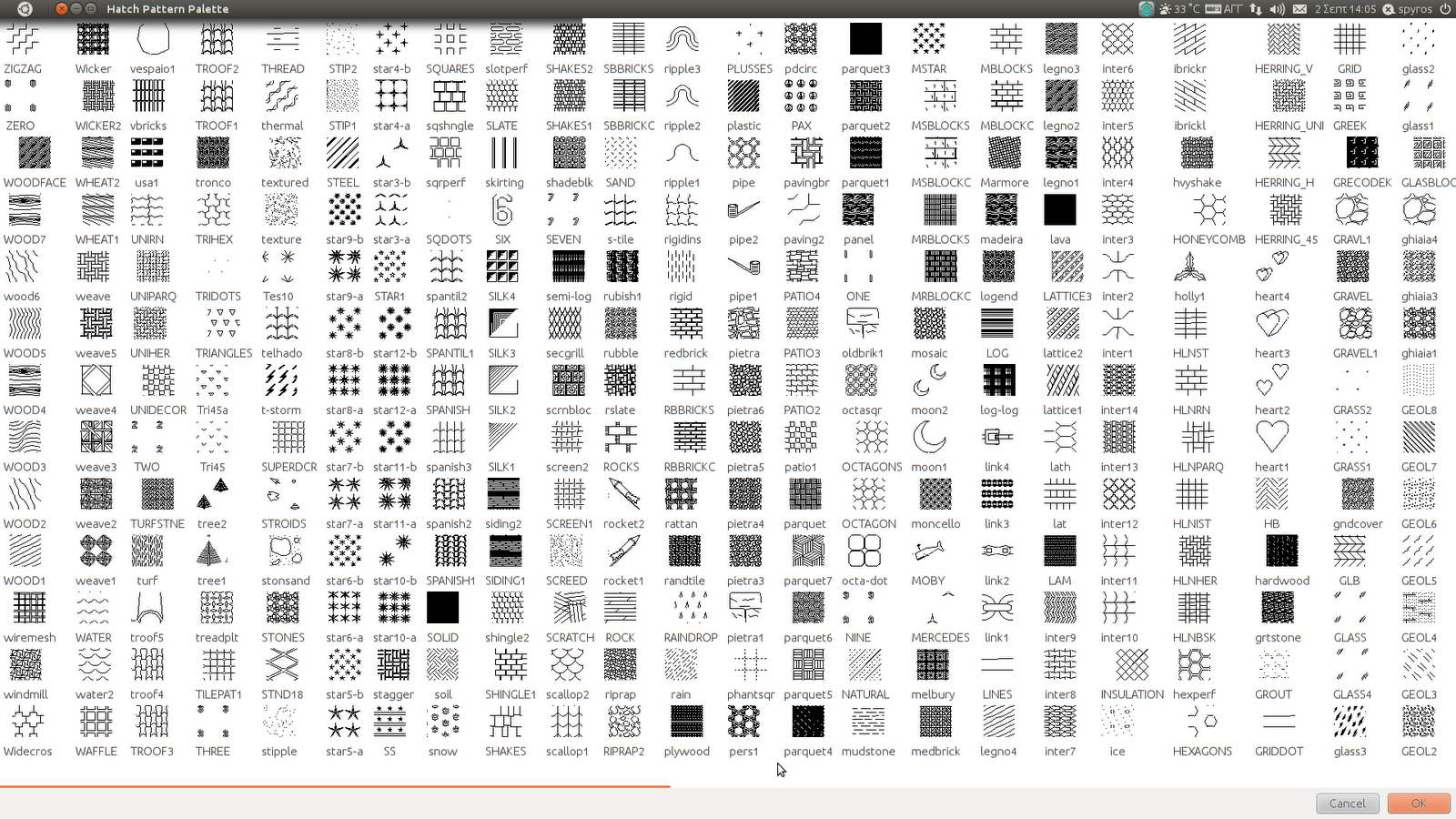

- Custom hatch patterns in autocad install#
- Custom hatch patterns in autocad code#
- Custom hatch patterns in autocad free#
For details, see Specifying entities or areas for hatching and gradients. The hatch origin will be saved in the HPORIGIN system variable.Ĩ To continue, specify entities or areas for hatching. To store the new hatch origin as the default, select Store as Default Origin.
Select Default to Boundary Extents to set the origin to the top left, top right, bottom left, bottom right, or center of the boundary extents.Ī new origin can be saved as the new default. Ĝlick ( ) to pick the new origin directly in the drawing. If you choose to specify a new origin, do one of the following: 
(Available for named layouts.)ħ In Hatch Origin, select whether to draw the hatch pattern from the default origin or a new origin. Related to paper space Select to scale the hatch pattern relative to the units defined for paper space.Theyre located in an external file, theyre editable within a. Changing the scale factor makes the hatch pattern larger or smaller than the default size. Instructor Custom hatch patterns are similar to custom line type definitions in many ways. Scale Enter the scale factor as a percentage of the default.
Custom hatch patterns in autocad install#
The AutoCAD PAT file generated can be saved onto your PC as and installed described in our Install Guide.
Custom hatch patterns in autocad free#
The default angle is clockwise you can change the angle by entering a numerical value. Create your own AutoCAD custom hatch patterns of any size using our free excel based AutoCAD Hatch Pattern Creation tool.
Angle Enter the angle of the hatch pattern relative to the x-axis in degrees (1-360). In the second (right) color list, select the color of the hatch background. Color In the first (left) color list, select the color of the hatch lines. You can also click to open the Hatch Patterns dialog box and select a pattern from the Custom tab. On the Draw toolbar, click the Hatch tool.ĥ In Custom Pattern, select a pattern from the list. On the menu, choose Draw > Hatch > Hatch. On the ribbon, choose Home > Hatch (in Draw) or Draw > Hatch (in Draw). Ĝhoose Tools > Options, click Paths/Files, and add the location of the custom pattern file (.pat file) to the folders listed for Hatch Patterns.Ģĝo one of the following to choose Hatch ( ):. To check where progeCAD searches for pattern files, choose Tools > Options, click Paths/Files, and check the folders listed for Hatch Patterns. Ĝopy the custom pattern file (.pat file) to the Patterns folder where you installed progeCAD. The hatch pattern definition is as follows:Īngle, x-origin, y-origin, delta-x, delta-y Īlternatively, you can add a custom hatch pattern to icad.pat and use predefined hatch patterns described previously instead of a custom library pattern below. pat file contains one hatch pattern, and the filename must match the name of the hatch pattern. You can use custom external hatch pattern libraries (.pat files), such as a standard library used in your office, customized patterns, and libraries available from vendors or standards organizations. Then Select OK.Specifying a custom library hatch pattern The pattern is imported and appears in the pattern list. The Units and import scale are displayed. Navigate to the *.pat file and select it.Ĭhoose the file in the import list. In the dialogue box that appears choose the Custom option. Drafting for the annotation objects and Model for 3D objects and Elevations. First choose whether to create a Drafting or Model Hatch. From the drop down menu, select Fill patterns To import into Revit select the Manage tab and choose Additional Settings. Once edited the *’pat file is saved in the same place as the revit.pat file. *HBFLEMET,Brickworkflemishbond Free patterns from %TYPE=MODEL Custom hatch patterns in autocad code#
These are Drafting or Model and *.pat file must have lines of code to accept these options, also the units of the hatch must be stated so that scaling problems do not occur.

There are two options when importing a pattern file into Revit. In files tab, below support file search path, add your folder. *HBFLEMET,Brickworkflemishbond Free patterns from 0,0,10,0,150,215,-122.5 Open AutoCAD options (type OP then enter). They have a header line with a name, which begins with an asterisk and is no more than 31 characters long, and an optional description. Regardless of where a definition is stored, hatch patterns have the same structure. However a few extra lines of code need to be added before it is imported into Revit. You can use the hatch patterns as they are, modify them, or create your own custom hatch patterns. Revit accepts the same format Hatch pattern as AutoCAD, which is the *.pat file extension which is editable using notepad.







 0 kommentar(er)
0 kommentar(er)
